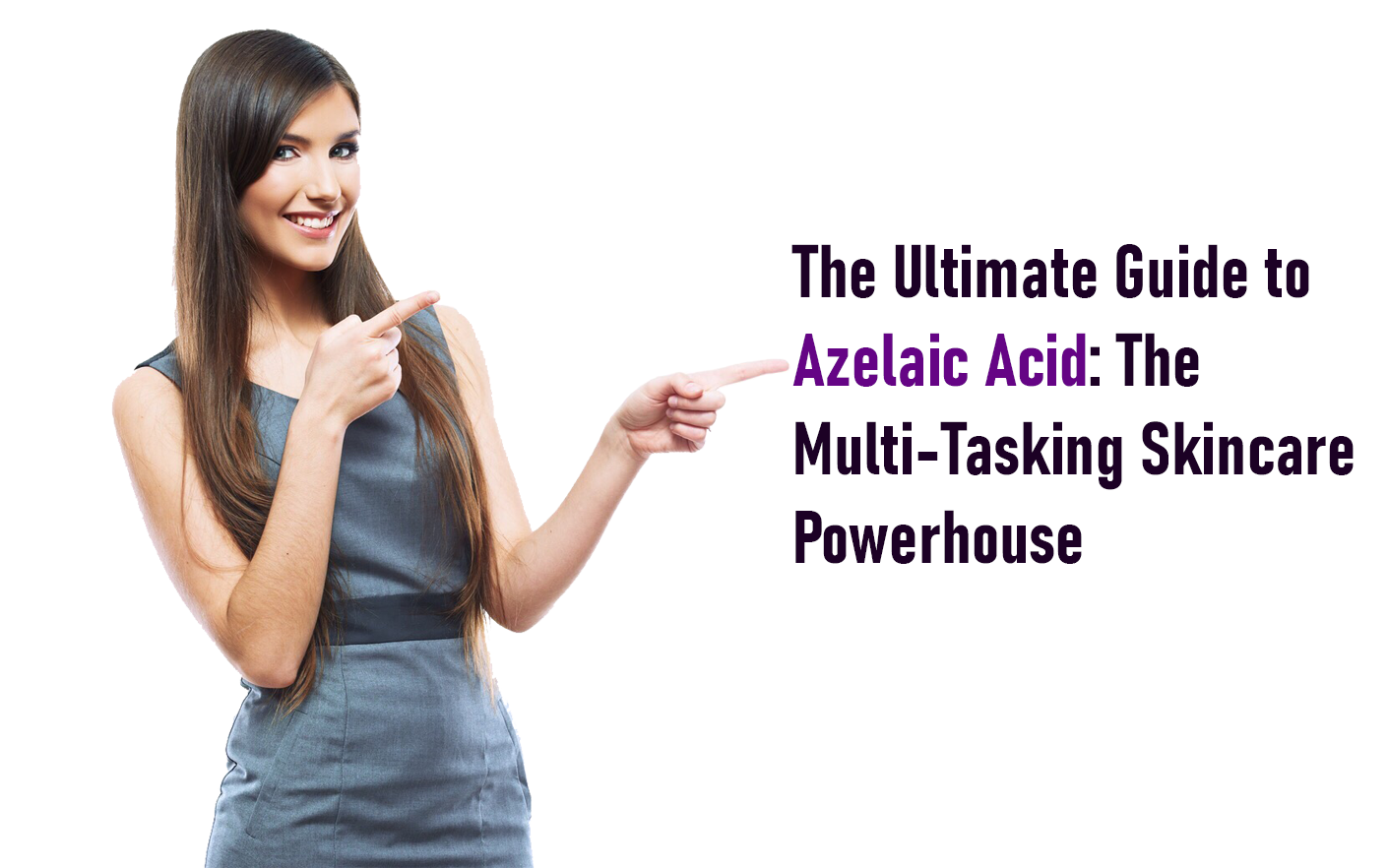
1. Azelaic Acid: The Multi-Tasking Skincare Powerhouse
Azelaic acid is a naturally occurring dicarboxylic acid found in grains like wheat, rye and barley. In skincare, it's prized for its ability to:
- Kill acne-causing bacteria (P. acnes)
- Reduce inflammation (great for rosacea)
- Inhibit melanin production (fades dark spots)
- Exfoliate gently (unclogs pores without irritation)
Key Mechanisms:
- ✔ Antimicrobial - Fights acne bacteria
- ✔ Anti-inflammatory - Calms redness and swelling
- ✔ Tyrosinase inhibitor - Brightens skin gradually
- ✔ Keratolytic - Gently exfoliates dead skin cells
2. Who Should Use Azelaic Acid?
- ✅ Acne-prone skin (especially inflammatory acne)
- ✅ Rosacea sufferers (reduces redness and bumps)
- ✅ Those with hyperpigmentation (melasma, PIH)
- ✅ Sensitive skin types (gentler than many actives)
- ✅ Pregnancy-safe alternative to retinoids
⚠️ Caution Needed If:
- You're allergic to grains (rare but possible)
- Using very high concentrations without building tolerance
3. Proven Benefits of Azelaic Acid
- Reduces both inflammatory and comedonal acne
- Less irritating than benzoyl peroxide
✔ Acne Treatment
- Clinically proven to reduce redness and papules
- 15-20% formulations often prescribed for rosacea
✔ Rosacea Relief
- Works on both post-acne marks and melasma
- More gentle than hydroquinone for dark skin tones
✔ Hyperpigmentation Fading
✔ Skin Brightening
4. How to Use Azelaic Acid
- Cleanse with gentle, pH-balanced cleanser
- Apply thin layer to dry skin (pea-sized amount)
- Start with every other day, increase to 1-2x daily
- Follow with moisturizer to prevent dryness
- Always use SPF during the day
Application Tips:
- Niacinamide - Boosts anti-inflammatory effects
- Hyaluronic Acid - Counters potential dryness
- Zinc - Enhances acne-fighting properties
Perfect Pairings:
5. Choosing the Right Product
- ✔ 10-20% concentration (most effective range)
- ✔ Cream or gel formulations (better than serums)
- ✔ Fragrance-free and non-comedogenic
- ✔ Air-tight packaging (prevents oxidation)
What to Look For:
| Format | Best For |
|---|---|
| Creams | Dry/Sensitive Skin |
| Gels | Oily/Acne-Prone Skin |
| Foams | Easy Application |
| Prescription | Stubborn Cases |
6. Natural Alternatives
While azelaic acid itself is derived from grains, these natural options may help similar concerns:
- Oat extract - Soothes inflammation
- Licorice root - Brightens skin
- Green tea - Reduces redness
7. Potential Side Effects
Common (temporary):
- Mild tingling/itching (usually subsides in 1-2 weeks)
- Slight dryness/flaking
Rare:
- Allergic reactions (discontinue if rash occurs)
- Increased sensitivity (use SPF diligently)
Disclosure: As an Amazon Associate, We earn from qualifying purchases. Product prices and availability are accurate as of the date/time indicated and are subject to change.
Alpha Arbutin
Lactic Acid
LEAVE A REPLY
Your email address will not be published. Required fields are marked *
Fast Delivery
Across West & East India
safe payment
100% Secure Payment
Online Discount
Add Multi-buy Discount
Help Center
Dedicated 24/7 Support
Curated items
From Handpicked Sellers





LEAVE A COMMENTs
Kim Dennison
"Finacea foam (15%) reduced my redness by 70% in 8 weeks. Life-changing for my confidence!"
Micheal McCann
"Tried it but the itching was unbearable. Any tips to reduce irritation?"
Joanna David
"Best drugstore azelaic acid product? Prescription isn't covered by my insurance."